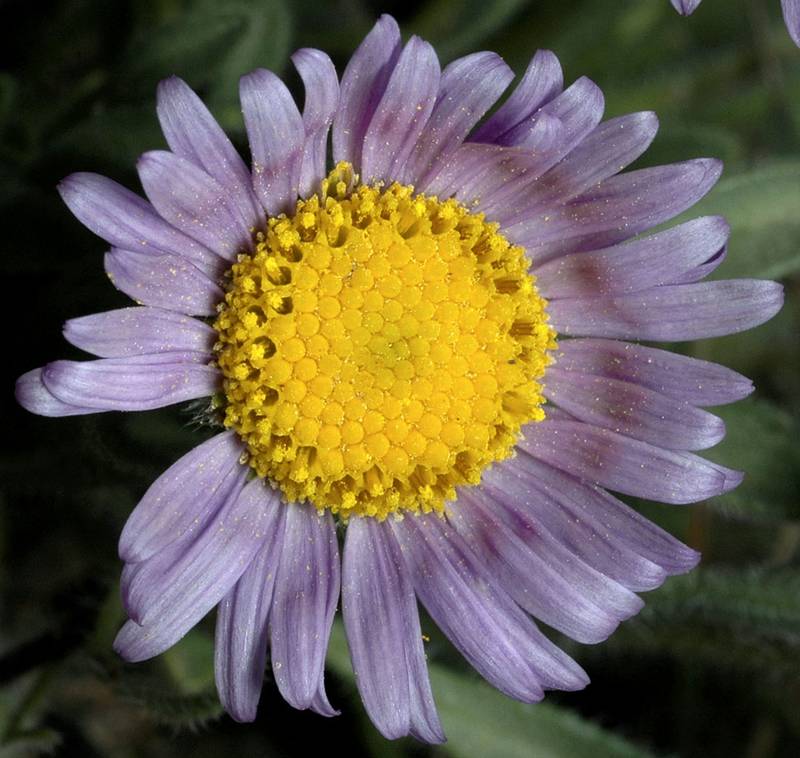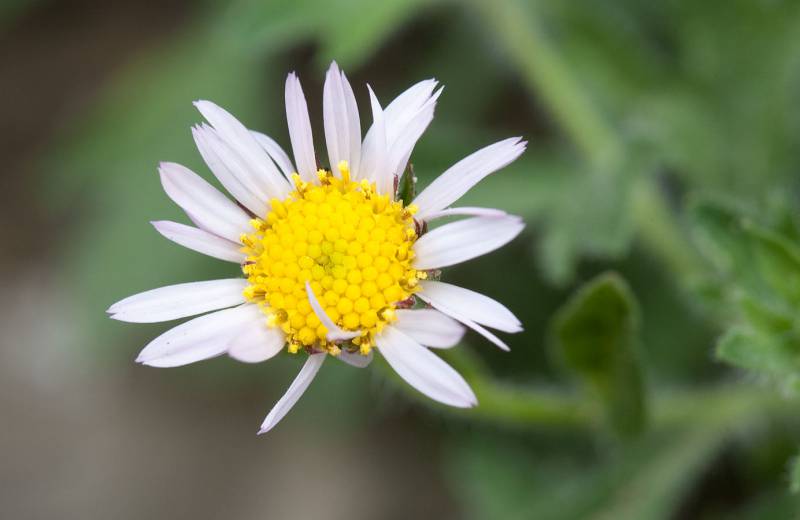|
hairy-seeded daisy, cushion fleabane
|
basalt fleabane
|
| Taprooted perennial with short-branched, woody base; stems to 15 cm. high; plants more or less spreading-hairy and glandular throughout. |
Several stems from a perennial taproot, sprawling, branched and leafy, especially near the tip. |
Basal leaves linear-oblanceolate to spatulate, up to 8 cm. long and 12 mm. wide, the cauline leaves reduced. |
Leaves with stiff, blunt hairs and fine glands, wedge-shaped to obovate, up to 4 cm. long and 1.5 cm. wide, deeply tri-lobed, the lobes broad. |
Heads solitary, hemispheric, the disk 9-20 mm. wide; involucre 5-9 mm. high; rays 15-45, pale pink or purple to deep violet, 4-15 mm. long and 1.3-3.6 mm. wide; pappus of 20-30 capillary bristles. |
Heads terminating the branches, the disk 8-12 mm. wide; involucre 5-6 mm. high, densely glandular; rays 25-30, light pink or pinkish-purple, 5-7 mm. long and 1.5 mm. wide; disk corollas 3-4 mm. long, pale yellow; pappus of 10-15 capillary bristles. |
Achenes densely covered with long, silky hairs. |
|
|
|
|
|
| April-June |
May-July |
| Dry, open, typically rocky areas, often with sagebrush. |
Cliff crevices in rocky canyons. |
Occurring east of the Cascades crest in Washington; British Columbia to Oregon, east to western Idaho.
|
Occurring east of the Cascades crest where endemic to Kittitas and Yakima counties in Washington.
|
| Native |
Native |
| Not of concern |
Threatened in Washington (WANHP) |
E. acris, E. aliceae, E. annuus, E. aureus, E. basalticus, E. bloomeri, E. caespitosus, E. chrysopsidis, E. compositus, E. corymbosus, E. davisii, E. disparipilus, E. divergens, E. eatonii, E. elatus, E. filifolius, E. flettii, E. glacialis, E. howellii, E. inornatus, E. karvinskianus, E. leibergii, E. linearis, E. lonchophyllus, E. nivalis, E. oreganus, E. peregrinus, E. philadelphicus, E. piperianus, E. pumilus, E. salishii, E. speciosus, E. strigosus, E. subtrinervis |
E. acris, E. aliceae, E. annuus, E. aureus, E. bloomeri, E. caespitosus, E. chrysopsidis, E. compositus, E. corymbosus, E. davisii, E. disparipilus, E. divergens, E. eatonii, E. elatus, E. filifolius, E. flettii, E. glacialis, E. howellii, E. inornatus, E. karvinskianus, E. leibergii, E. linearis, E. lonchophyllus, E. nivalis, E. oreganus, E. peregrinus, E. philadelphicus, E. piperianus, E. poliospermus, E. pumilus, E. salishii, E. speciosus, E. strigosus, E. subtrinervis |
|
|
| |
BC,
OR,
WA
Flora NW,
PNW Herbaria
WildflowerSearch
iNaturalist (observations)
USDA Plants Database



